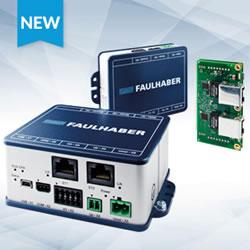Velodyne's 3D LiDAR Sensor Enables Embry-Riddle Boat to Take First Place in International Roboboat Competition
HDL-32E Sensor Guides the Way Toward Win in Maritime Event
MORGAN HILL, Calif.---July 29, 2014
Navigating a floating obstacle course with aplomb, an autonomous LiDAR-equipped boat from Embry-Riddle Aeronautical University (http://www.erau.edu/) captured first place overall at the 7th Annual International RoboBoat Competition held July 13 in Virginia Beach, Virginia.
Outfitted with Velodynes HDL-32E LiDAR sensor, the pilot-less Embry-Riddle vessel crossed the finish line ahead of the 12 other teams participating in the event, which was sponsored by the Office of Naval Research, the AUVSI (Association for Unmanned Vehicle Systems International) Foundation and several industry partners. The race is the precursor to the Maritime RobotX Challenge, a major AUVSI competition in Singapore (http://www.robotx.org).
Central to the competition was the successful navigation of an obstacle field. The Embry-Riddle team mounted the sensor on its boat and was able to navigate through the obstacle course with precision, well ahead of the other competitors. The HDL-32E from Velodynes LiDAR Division (http://www.velodynelidar.com) is part of a growing family of solutions built around the companys Light Detection and Ranging technology.
"Our performance in the RoboBoat competition was made possible by the amazing Velodyne sensor, which provided us the necessary edge over the other teams," said Hitesh V. Patel, Research Associate at Embry-Riddle. "Our win in Virginia Beach has paved the way for the RobotX team in Singapore. The Velodyne HDL-32E is such an impressive sensor, and were delighted at the initial outcome of this partnership."
"Our 3D LiDAR sensors guide autonomous vehicles on land, on the seas and in air, and our hats are off to Embry-Riddle University," said Wolfgang Juchmann, Director of Sales & Marketing, Velodyne LiDAR division. "Were recognized worldwide for developing real-time LiDAR sensors for all kinds of autonomous applications, including 3D mapping and surveillance. With a continuous 360-degree sweep of its environment, our sensors capture data at a rate of 1.3 million points per second, within a range of 100 meters - ideal for taking on obstacle courses, wherever they may be. Still, its up to users to implement the sensor and adapt it to their specific environment. Thats why Embry-Riddle deserves such kudos, and why were so looking forward to the Maritime RobotX competition in Singapore later this summer."
About Embry-Riddle Aeronautical University
Embry-Riddle Aeronautical University, the worlds largest, fully accredited university specializing in aviation and aerospace, is a nonprofit, independent institution offering more than 70 baccalaureate, masters and Ph.D. degree programs in its colleges of Arts & Sciences, Aviation, Business, Engineering and Security & Intelligence. Embry-Riddle educates students at residential campuses in Daytona Beach, Fla., and Prescott, Ariz., through the Worldwide Campus with more than 150 locations in the United States, Europe, Asia and the Middle East, and through online programs. The university is a major research center, seeking solutions to real-world problems in partnership with the aerospace industry, other universities and government agencies. For more information, visit http://www.embryriddle.edu.
About Velodyne LiDAR
Founded in 1983 and based in Californias Silicon Valley, Velodyne Acoustics, Inc. is a diversified technology company known worldwide for its high-performance audio equipment and real-time LiDAR sensors. The companys LiDAR division evolved after founder and inventor David Hall competed in the 2004-05 DARPA Grand Challenge using stereovision technology. Based on his experience during this challenge, Hall recognized the limitations of stereovision and developed the HDL64 high-resolution LiDAR sensor. More recently, Velodyne has released its smaller, lightweight HDL 32E sensor, available for many applications including UAVs. Since 2007, Velodynes LiDAR division has emerged as a leading developer, manufacturer and supplier of real-time LiDAR sensor technology used in a variety of commercial applications including autonomous vehicles, vehicle safety systems, 3D mobile mapping, 3D aerial mapping and security. For more information, visit http://www.velodynelidar.com.
Featured Product

FAULHABER Drive Systems at the Robotics Summit & Expo in Boston from April 30 to May 1 in Hall C at Booth 534
Faulhaber will be presenting their drive systems for robotics and smart technology. Robots are versatile and can be found in many areas, for example, transporting goods, operating on patients or supporting the agriculture industry. With the help of robots, processes can be automated, the flow of materials optimized and employees relieved. Equipped with FAULHABER drive systems, these robots can take on tasks where the demands on function and applications are high.
